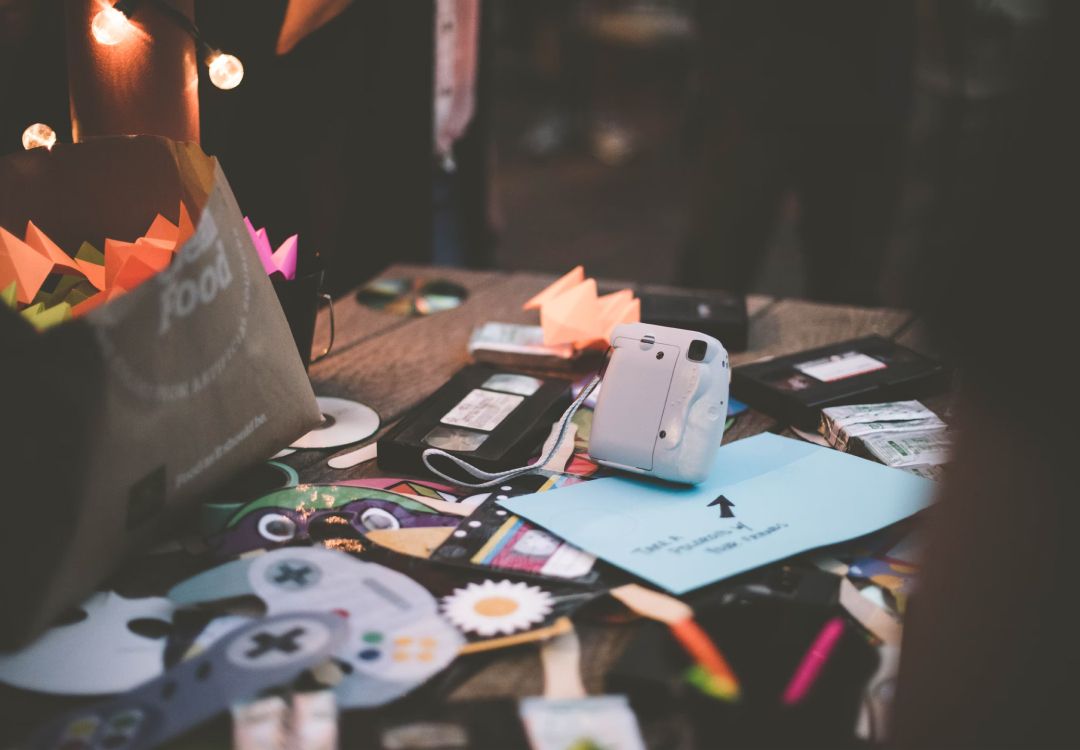Can company events impact employee mental wellbeing?
- Authors
- Ricardo Soares
- Publish Date
With all that’s going on in the world and how quickly many workplaces are evolving, it’s no surprise that company events have quietly disappeared in many organizations.
While it’s easy enough to understand why company events aren’t happening—difficulties combining hybrid and remote teams across time zones and barriers to meeting in-person, among others—today our focus is on how these get-togethers and special occasions can have a direct and positive impact on employee and workplace mental wellbeing. We’ll also share our best tips on planning a successful event where employees can truly connect.
The role of events in connection and company culture
We spend 1/3 of our lives (roughly 90,000 hours over a lifetime) at our jobs. Liking, trusting and feeling comfortable with the people we work beside can make all the difference in our day to day. To summarize Abraham Lincoln, the better part of life consists of friendships—and employers need to start taking that message to heart as an important part of employee wellbeing and mental health.
Recent studies show that quality workplace friendships are directly linked to increased employee satisfaction and engagement, as well as to improved group performance and productivity. But for these friendships to happen, employees must have the opportunity to make connections and get to know each other by sharing experiences. In distributed and remote organizations in particular, events play a key role engaging employees and making the workplace a safe space for employees.
When properly planned and executed, these events can offer an opportunity for people to share an experience, connect across departments, and build stronger relationships with their teams. And those stronger relationships positively impact employees’ physical and mental health. Here are some tips on how to help your team connect with hybrid events.
How to use events to connect your team (and improve employee mental wellbeing)
1. Involve employees from diverse teams
By including people from across technical, administrative and creative teams (as well as across regions and countries if you have a dispersed team), you’re more likely to get a wide range of ideas for your event.
It’s important to note that sometimes to get a truly diverse sampling of your team together you may need to approach people and directly ask them if they’d be open to participating. This was true for us when planning our first anniversary celebration, mostly women from our European teams volunteered. So to include a wider cross-section of our team, our People team reached out to some male employees, to gain a more defined gender split, as well as members of our US team, to ensure the event wasn't too focused on our European team.
2. Make it special and fun
The hardest part of creating a company event? Making it an occasion people actually want to attend. While obviously, you’re designing internal events to benefit your team, this is trickier than it sounds. You’ll need to keep a close eye on who your employees are, how they’re feeling, and what they like. The best policy is to seek out feedback regularly to ensure you’re always on top of this information. For big events, you may want to do a special survey in advance to see what people on your teams might enjoy. At Koa, we do a regular monthly wellbeing survey and as a result, when planning our most recent event, we recognised that whilst introduced as a positive activity, the timing had to change so it did not impact on our team's already busy schedules.
You’ll also want to do your best to incorporate the story behind your company culture, aka, what makes your company unique and appealing. For example, at our latest event, a hybrid celebration of our first-year anniversary as a company, we had a trivia competition, testing small groups’ knowledge of their coworkers, our brands and products. We also had Koa trees planted in Hawaii both as a symbolic tribute to our brand name, Koa Health and a real-life demonstration of our company’s commitment to sustainability.

3. Set expectations in advance
While surprises can be lovely, to a certain extent, most people want to know what to expect ahead of time. This means letting people know the date as far in advance as possible, and setting aside a window of time. Keeping expectations managed also means ensuring everyone knows if any prior preparation or practical tools are required for participation. For example, for our team members who were leading activities or presenting during our event, we created documents and had calls to help them prepare their facilitation.
Setting clear expectations doesn’t mean however, that surprises are out of the question, just that they should live within a framework that you’ve communicated in advance. In the case of our last event, for example, our team knew the date, the time, and what they needed to prepare in advance of our gathering, but they didn’t know about a few surprises we had up our sleeves, such as the prizes for trivia rounds and the Koa trees we planted in Hawaii.
4. Make it work for everyone
Events should be relevant and easy to access for everyone in attendance. What does that mean in practice? It means scheduling them at times that work for employees across time zones, preferably during core working hours for as many teams as possible. This eliminates one major barrier to participation: timing.
When possible, make room for a variety of activities that can appeal to many different team members. Some people prefer more structured social encounters, aka quizzes and games, while others like chatting more informally. In our first anniversary celebration, for example, part of our celebration was more passive—the entire company as a group listening to a fun presentation from different team members about what we’ve achieved so far. The next part was more active as we split into small groups for activities. But while our 2021 event was hybrid, with many regional team members celebrating in-person together at the office, our 2020 launch was completely virtual. So to help encourage more informal social interactions, we used a platform where we had avatars that could walk around and video chat with coworkers as we encountered them.
Workplace events are as varied as the companies who create them. But their true importance lies in how they create opportunities for social interactions and relationship building—research shows these elements generate employee and organizational thriving.
Want to learn more about how to help your team (and your business) thrive? Watch our on-demand webinar
Are events part of your organization’s strategy to support employee mental wellbeing? Let us know at support@koahealth.com
about the author

Ricardo Soares
People Manager
People Manager at Koa Health, Ricardo is dedicated to making life at Koa a positive experience for the entire team. He’s responsible for developing and implementing plans for talent management, onboarding, training, performance management and career development, as well as employee engagement and retention activities.
